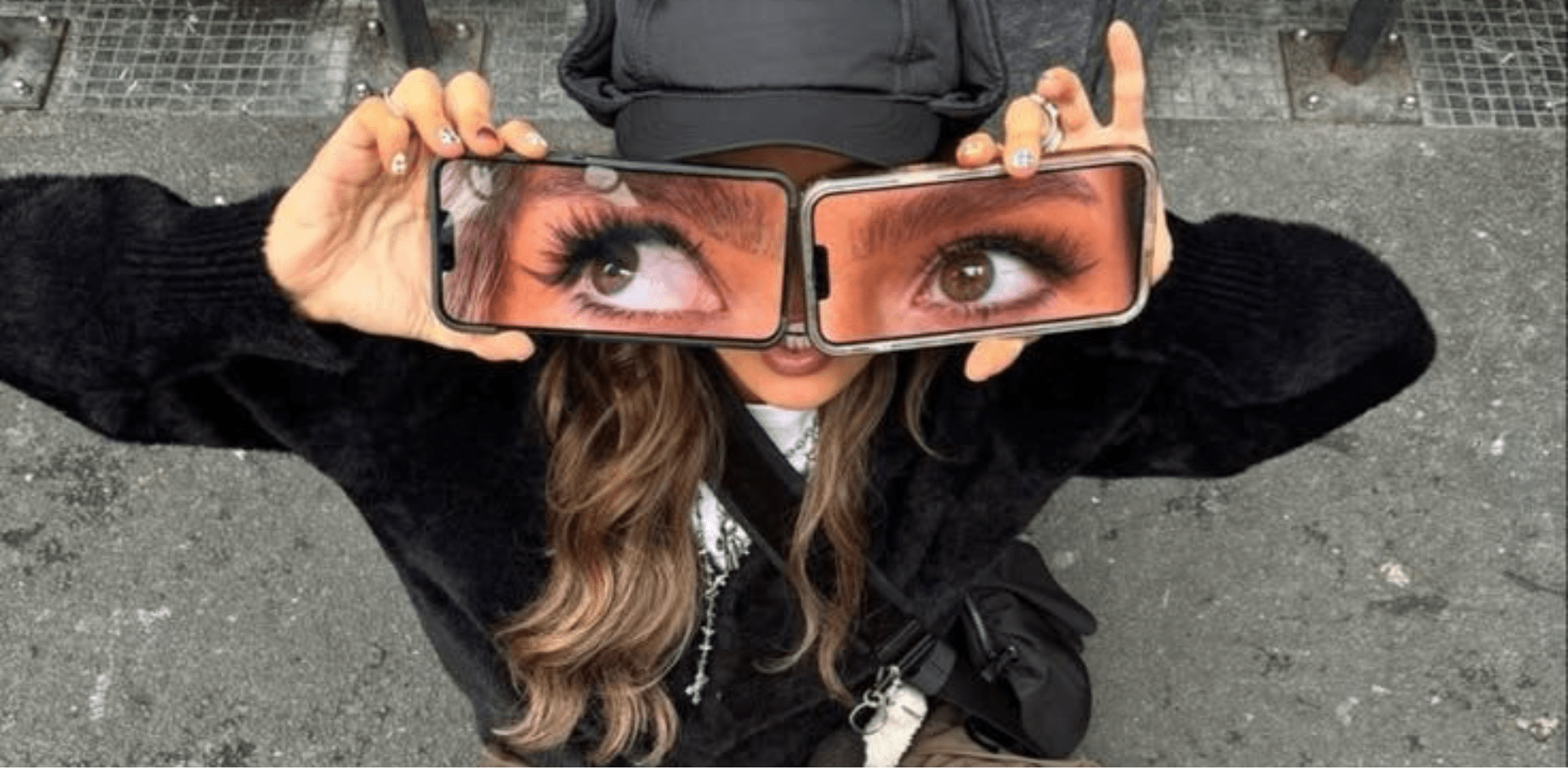Picture the scene: you’re scrolling on Instagram, a reel catches your eye. It’s hilarious. Within seconds you’ve tagged your friend in the comments (they’re bound to love it too) and shared it to your friendship group. They go on to share it with others. Sound familiar?
This high level of sharing and engagement is the key driver behind viral content. But what exactly is viral content? Essentially, this is digital media that reaches a huge audience in a very short space of time, spreading through the internet like wildfire. As for what makes something shareable enough to become viral? Although there isn’t a specific formula, viral content does tend to consist of a particular blend of components, including the below…
1. The shock factor: tapping into emotions
If a piece of content makes you laugh hysterically or makes you rage with anger, then you’re probably more likely to share it. It could even shock you and take you by total surprise.
This Instagram post by @nadineihenacho for Silk’n kicks off with Nadine cutting off a huge chunk of her hair. In just seconds, she goes from having long hair, to having a short bob.
Nadine has just 46k followers yet this video amassed more than 2.1 million likes on Instagram. Over on TikTok Nadine’s video also got 64k likes and was shared a whopping 941 times.
Research has been done which proves that content which ‘evokes either high-arousal positive emotions (awe) or negative emotions (anger or anxiety)’ tends to be more viral.
Whereas, content that evokes low arousal or deactivating emotions (such as sadness) tends to be less viral.
It’s practical
So how DO you cut a capsicum without getting the seeds everywhere? Or how can you create the perfect ‘messy bun’?
From how-to guides, to quick tutorials that solve an everyday problem to make life easier, content that provides useful information or life hacks is shareable as it offers a solution to a problem.
A clickbait headline can also help spur on the sharing. ‘This hack will change your life’ or ‘this weird trick helps.. XXXX’ can instantly hook you in’.‘
It’s real
Building trust with followers is vital, and again, this helps to connect with people on an emotional level, which is important to help boost engagement. If your posts are real and authentic rather than scripted and staged, more people will be able to relate, further increasing the shareability factor.
It’s celebrity-approved
If your favourite celebrity is posting it, then you’re more likely to post it too. You only need to look at the followings of some of the big names such as footballer Christiano Ronaldo with 640 million, Kylie Jenner with 396 million and Kim Kardashian with 360 million, to see just how popular these stars are.
This post by Kim where she mocks herself with the ‘of course’ challenge, has been watched 41 million times and saved by over 233 thousand people.
Influencers, the latest wave of social-media celebrities, also play a big role in viral content. Not only are you more likely to agree with and support your favourite influencer, but, large followings reach a wider audience, helping content to grow.
It’s easily imitated
Memes and catchphrases are often funny and relatable, in turn making them easier to like, comment on and share. The beauty of memes is that they often target areas of life which many people don’t discuss yet everyone can associate with.
Some memes contain viral phrases such as ‘How it started vs how it’s going’, others contain familiar photos such as Side Eyeing Chloe and the Success Kid.

About the author
Simarin Tandon | Performance and Digital Marketing Manager
Having worked with brands across the Beauty &Wellness, FMCG, FinTech, and Home & Lifestyle sectors, Simarin focuses on driving acquisition and growth, whilst managing the performance team at brandnation.
A curious marketer, Simarin is always on the pulse when it comes to performance and digital updates across both paid and organic platforms.
2. The role of algorithms
Of course, while the content is key, the specific algorithms of different social media platforms also play a role. These algorithms determine how content is filtered, selected and recommended to users. Content is often prioritised based on the number of likes, shares and comments it received, helping it go viral. And, sharing is made easy thanks to Retweets and the ‘share to story’ button.
If you’re posting a video, keeping it short (under 60 seconds) can increase the chances of it going viral as it’s easy to consume shorter content and therefore more likely to be engaged with.
3. Timing is key
A post about Halloween in March is unlikely to do too well.
For content to go viral, it needs to tap into current events or culture moments. If you post a reel that times with current breaking news, you’ll likely receive higher engagement, in turn boosting the chances of it going viral.
Conclusion
Ultimately, it’s not easy to create a piece of viral content; after all, if it was easy, everyone online would be doing it. However, by ensuring your content triggers emotions and making it relatable and real, will help to increase your chances of viral success.





